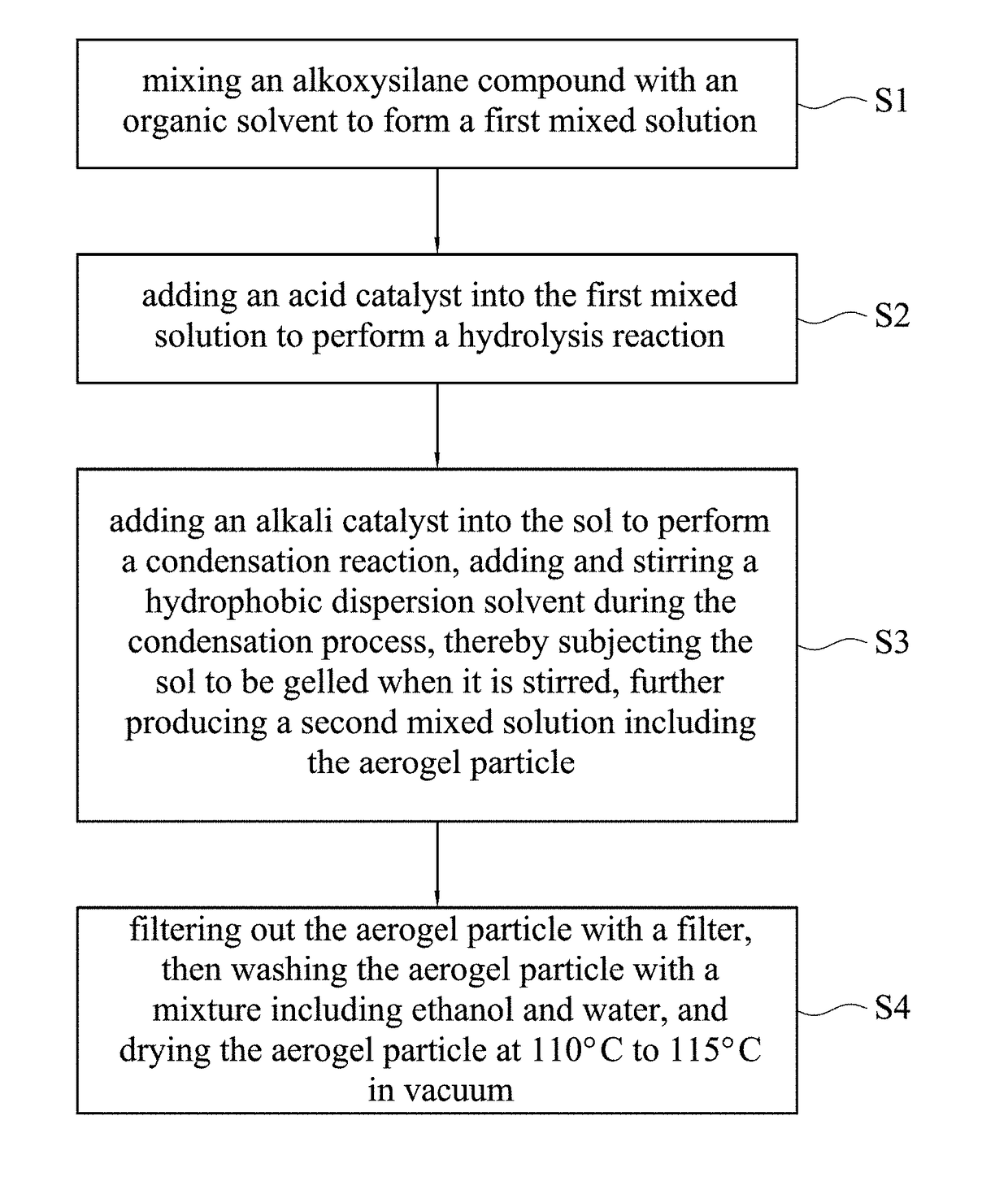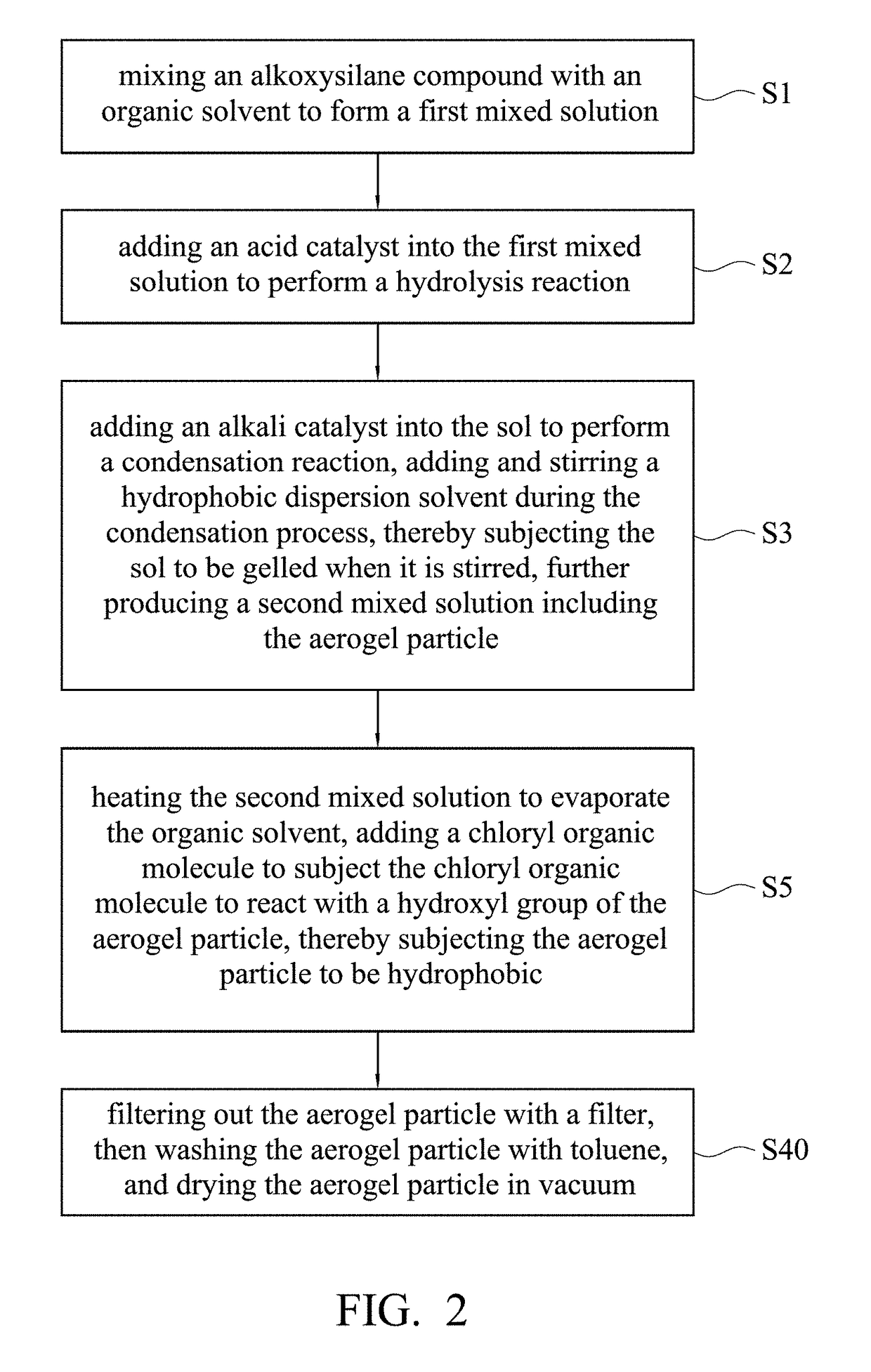Aerogel particle and method of producing the same
a technology of aerogel and particle, which is applied in the field of aerogel particle, can solve the problems of small amount of aerogel that can be dried in each supercritical drying process, difficult to produce aerogel in mass, and low production cost of aerogel, so as to reduce the processing time of displacement technology, reduce the viscosity of non-dissolved solvent, and reduce the effect of processing tim
- Summary
- Abstract
- Description
- Claims
- Application Information
AI Technical Summary
Benefits of technology
Problems solved by technology
Method used
Image
Examples
Embodiment Construction
[0037]According to the aforementioned features, the effects of the aerogel particle and the method of producing the same can be clearly showed by following embodiments.
[0038]Please refer to FIG. 1, which discloses the method of producing the aerogel particle according to an embodiment of the present invention. The method comprises following processes: a mixing process (S1), a hydrolysis process (S2), a condensation process (S3) and a post-treatment process (S4).
[0039]The mixing process (S1): an alkoxysilane compound is mixed with an organic solvent to form a first mixed solution. The alkoxysilane can be tetramethoxysilane (TMOS), tetraethoxysilane (TEOS), or a precursor of methyl silicate or the like. An amount of the alkoxysilane or the precursor of methyl silicate is 2.1 mol % to 12.5 mol %, and an amount of the organic solvent is 97.9 mol % to 87.5 mol %.
[0040]The hydrolysis process (S2): an acid catalyst is added into the first mixed solution to perform a hydrolysis reaction, th...
PUM
 Login to View More
Login to View More Abstract
Description
Claims
Application Information
 Login to View More
Login to View More - R&D
- Intellectual Property
- Life Sciences
- Materials
- Tech Scout
- Unparalleled Data Quality
- Higher Quality Content
- 60% Fewer Hallucinations
Browse by: Latest US Patents, China's latest patents, Technical Efficacy Thesaurus, Application Domain, Technology Topic, Popular Technical Reports.
© 2025 PatSnap. All rights reserved.Legal|Privacy policy|Modern Slavery Act Transparency Statement|Sitemap|About US| Contact US: help@patsnap.com



